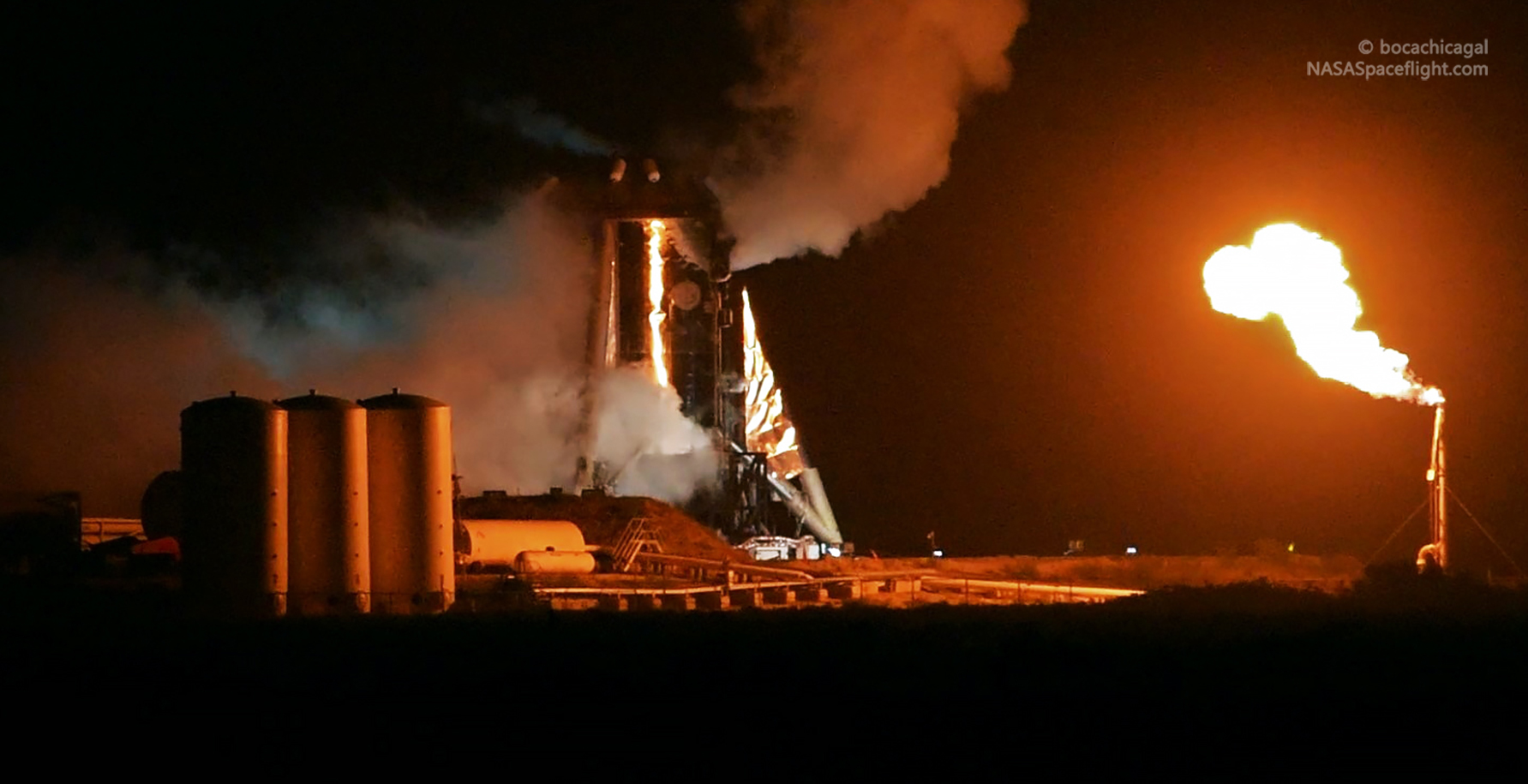
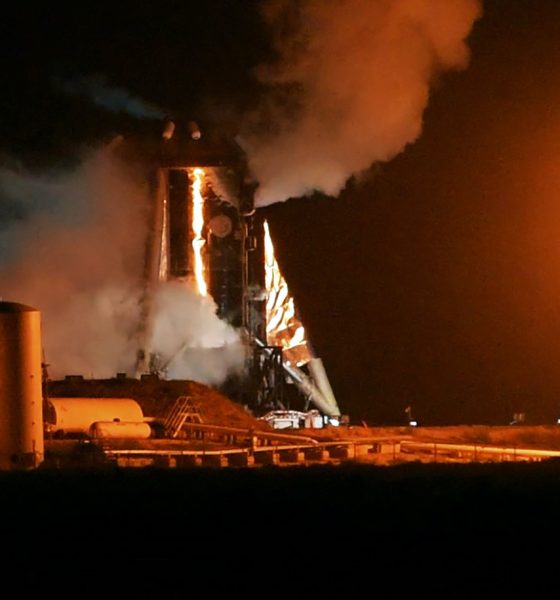
News
SpaceX’s next Starhopper flight needs more analysis for FAA go-ahead, says Elon Musk
According to SpaceX CEO Elon Musk, the company’s next major Starhopper flight test is still awaiting FAA approval due to a need for more hazard analysis, presumably required because Starhopper will be traveling much higher than before.
On August 9th, SpaceX completed a routine wet dress rehearsal (WDR) with Starhopper, loading the vehicle with propellant and fluids and replicating a launch countdown up to the point of Raptor ignition. Starhopper remains untethered in a sign that SpaceX doesn’t have plans for a static fire test before the low-fidelity rocket prototype’s next flight milestone. Originally scheduled for August 12th, that milestone – a 200m (650 ft) hop test – has been indefinitely delayed as SpaceX awaits an updated permit from the Federal Aviation Administration (FAA).
The oddity of the apparent difficulty SpaceX is having with the FAA’s experimental permit process is deepened by the fact that Starhopper is already permitted by the FAA and demonstrated its first successful flight just a few weeks ago, on July 25th. On top of the fact that the local Boca Chica and Brownsville, Texas airspace tends to be extremely quiet, it’s unclear what exactly is holding up SpaceX, the FAA, or both in what should otherwise be a relatively streamlined process.
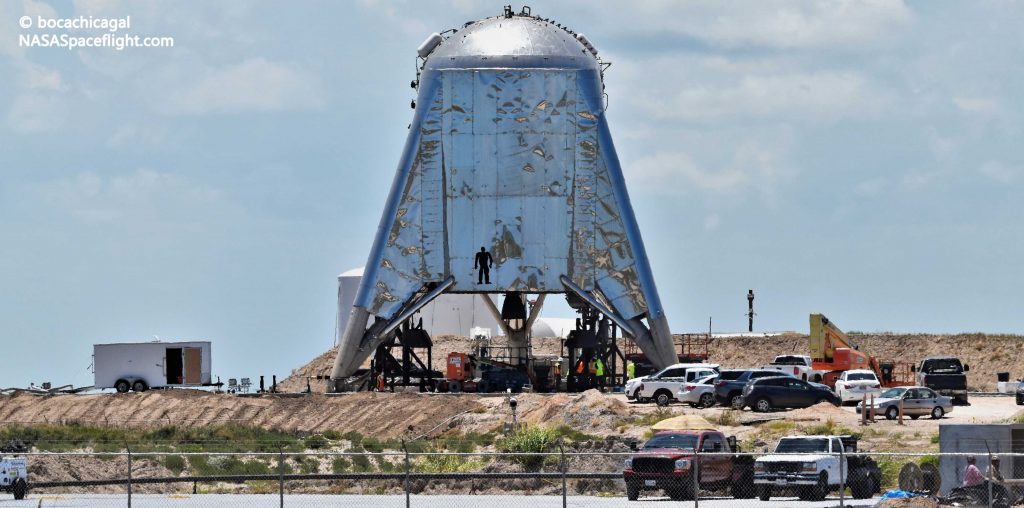
A few weeks ago, after one false start on July 24th, Starhopper performed its first untethered flight ever on July 25th, successfully demonstrating its integrated steel propellant tanks, avionics, software, and Raptor propulsion over the course of 20 or so seconds of flight. Starhopper’s inaugural flight was delayed at least several weeks by a major bug with SpaceX’s next-gen Raptor engine, described by Elon Musk as a problem with a certain frequency of vibration (i.e. mechanical resonance).
According to Musk, said resonance failure mode was effectively solved with unspecified modifications made to the sixth Raptor engine produce (Raptor SN06). That engine became the first to successfully pass SpaceX’s regime of pre-hop static fires in McGregor, Texas around July 10th and was shipped south to Boca Chica and installed on Starhopper scarcely 24 hours later.
Assuming those vibration issues have been completely quashed, Musk has also stated that SpaceX is aiming to produce as many as two Raptor engines per day by the end of 2019. It’s believed that all engines preceding SN06 (SN01-05) were either damaged or destroyed during testing, be that a result of intentional testing-to-destruction or anomalous behavior during certain test regimes. It should be noted that full-scale Raptor is still undoubtedly in development and hardware failure during developmental testing is more predictable and valuable than it might seem. As long as the program can handle it, ‘hardware-rich’ development (i.e. moving fast and breaking things) can be equally – if not more – valuable than an extremely cautious get-it-right-the-first-time approach.
Regardless, once SpaceX’s propulsion engineering team is confident that the more major bugs that plagued early Raptor engines have been alleviated, they will likely give the go-ahead for the engine manufacturing team to begin ramping production rates. Musk believes that SpaceX could be ready for the first test flights of either or both of the company’s orbital Mk1 and Mk1 Starship prototypes as early as mid-September, milestones that will eventually require three sea-level Raptor engines and up to three vacuum Raptor engines per rocket.
Meanwhile, although SpaceX has yet to begin assembling the first Super Heavy booster(s), said boosters will require dozens of Raptor engines each for their first flights. Musk says that SpaceX will start out with something like 20 Raptor engines per booster to minimize losses and disruption in the event of a catastrophic failure, eventually expanding to as many as 35 engines per booster as confidence grows.
For now, Starhopper’s next flight test was scheduled from August 16th through the 18th but has since been tentatively rescheduled to Aug. 19-21. Starhopper will remain grounded until the FAA is satisfied with SpaceX’s updated hazard analyses for the rocket’s 200m flight test.
Check out Teslarati’s Marketplace! We offer Tesla accessories, including for the Tesla Cybertruck and Tesla Model 3.

News
Tesla stands to gain from Ford’s decision to ditch large EVs
Tesla is perhaps the biggest beneficiary of Ford’s decision, especially as it will no longer have to deal with the sole pure EV pickup that outsold it from time to time: the F-150 Lightning.
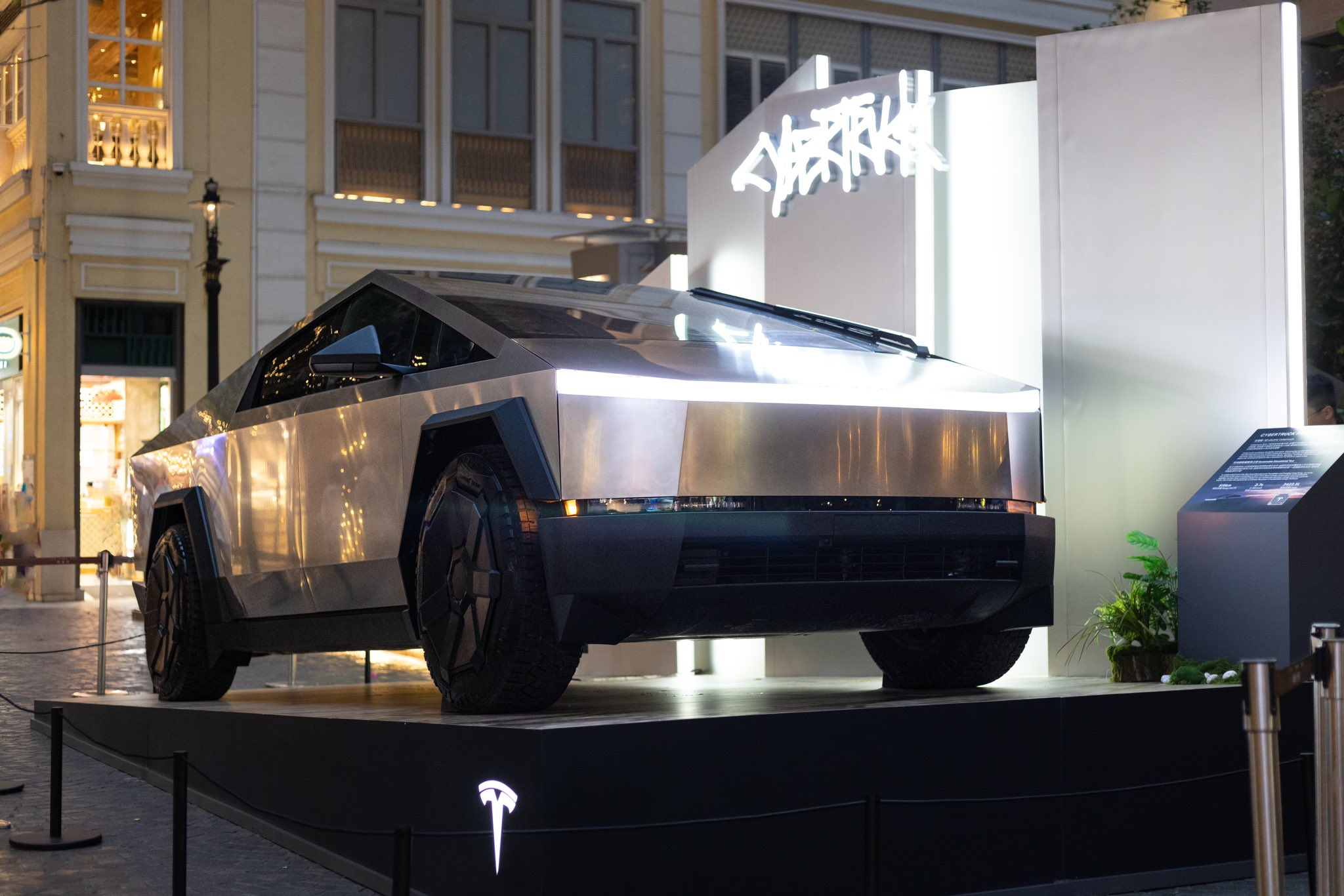
Ford’s recent decision to abandon production of the all-electric Ford F-150 Lightning after the 2025 model year should yield some advantages for Tesla.
The Detroit-based automaker’s pivot away from large EVs and toward hybrids and extended-range EVs that come with a gas generator is proof that sustainable powertrains are easy on paper, but hard in reality.
Tesla is perhaps the biggest beneficiary of Ford’s decision, especially as it will no longer have to deal with the sole pure EV pickup that outsold it from time to time: the F-150 Lightning.
Here’s why:
Reduced Competition in the Electric Pickup Segment
The F-150 Lightning was the Tesla Cybertruck’s primary and direct rival in the full-size electric pickup market in the United States. With Ford’s decision to end pure EV production of its best-selling truck’s electric version and shifting to hybrids/EREVs, the Cybertruck faces significantly less competition.
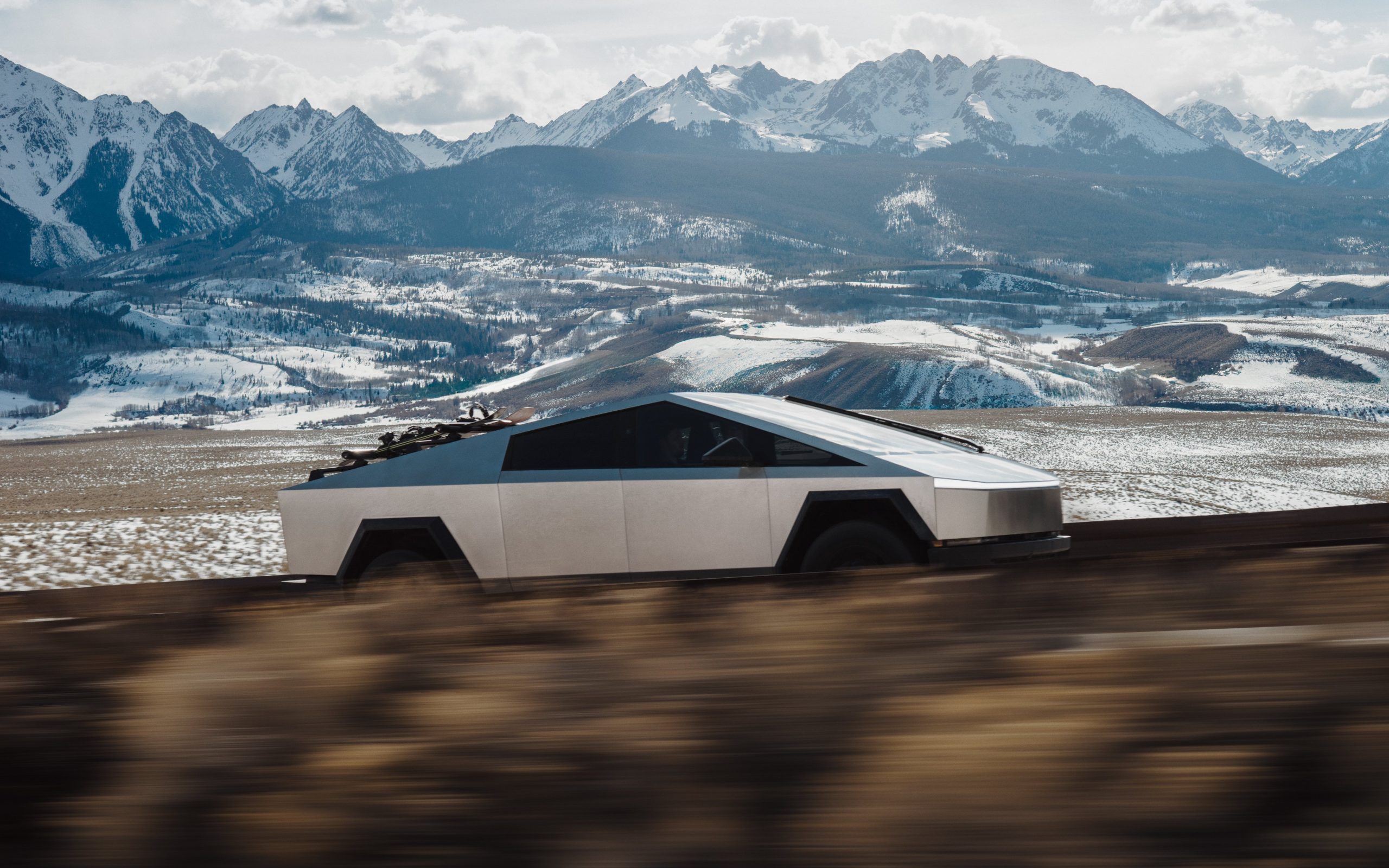
Credit: Tesla
This could drive more fleet and retail buyers toward the Cybertruck, especially those committed to fully electric vehicles without a gas generator backup.
Strengthened Market Leadership and Brand Perception in Pure EVs
Ford’s pullback from large EVs–citing unprofitability and lack of demand for EVs of that size–highlights the challenges legacy automakers face in scaling profitable battery-electric vehicles.
Tesla, as the established leader with efficient production and vertical integration, benefits from reinforced perception as the most viable and committed pure EV manufacturer.
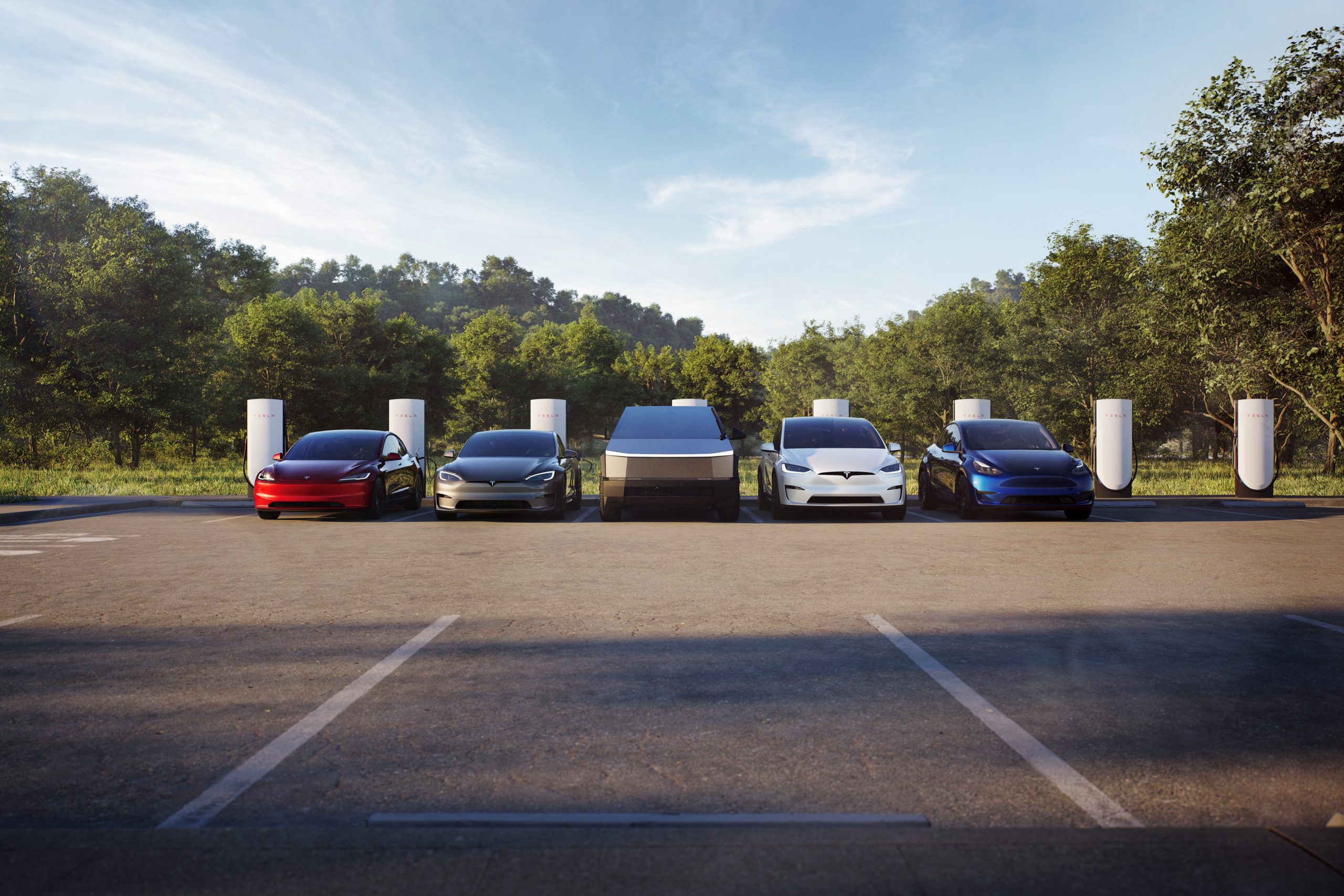
Credit: Tesla
This can boost consumer confidence in Tesla’s long-term ecosystem over competitors retreating to hybrids. With Ford making this move, it is totally reasonable that some car buyers could be reluctant to buy from other legacy automakers.
Profitability is a key reason companies build cars; they’re businesses, and they’re there to make money.
However, Ford’s new strategy could plant a seed in the head of some who plan to buy from companies like General Motors, Stellantis, or others, who could have second thoughts. With this backtrack in EVs, other things, like less education on these specific vehicles to technicians, could make repairs more costly and tougher to schedule.
Potential Increases in Market Share for Large EVs
Interestingly, this could play right into the hands of Tesla fans who have been asking for the company to make a larger EV, specifically a full-size SUV.
Customers seeking large, high-capability electric trucks or SUVs could now look to Tesla for its Cybertruck or potentially a future vehicle release, which the company has hinted at on several occasions this year.
With Ford reallocating resources away from large pure EVs and taking a $19.5 billion charge, Tesla stands to capture a larger slice of the remaining demand in this segment without a major U.S. competitor aggressively pursuing it.
News
Ford cancels all-electric F-150 Lightning, announces $19.5 billion in charges
“Rather than spending billions more on large EVs that now have no path to profitability, we are allocating that money into higher returning areas, more trucks and van hybrids, extended range electric vehicles, affordable EVs, and entirely new opportunities like energy storage.”
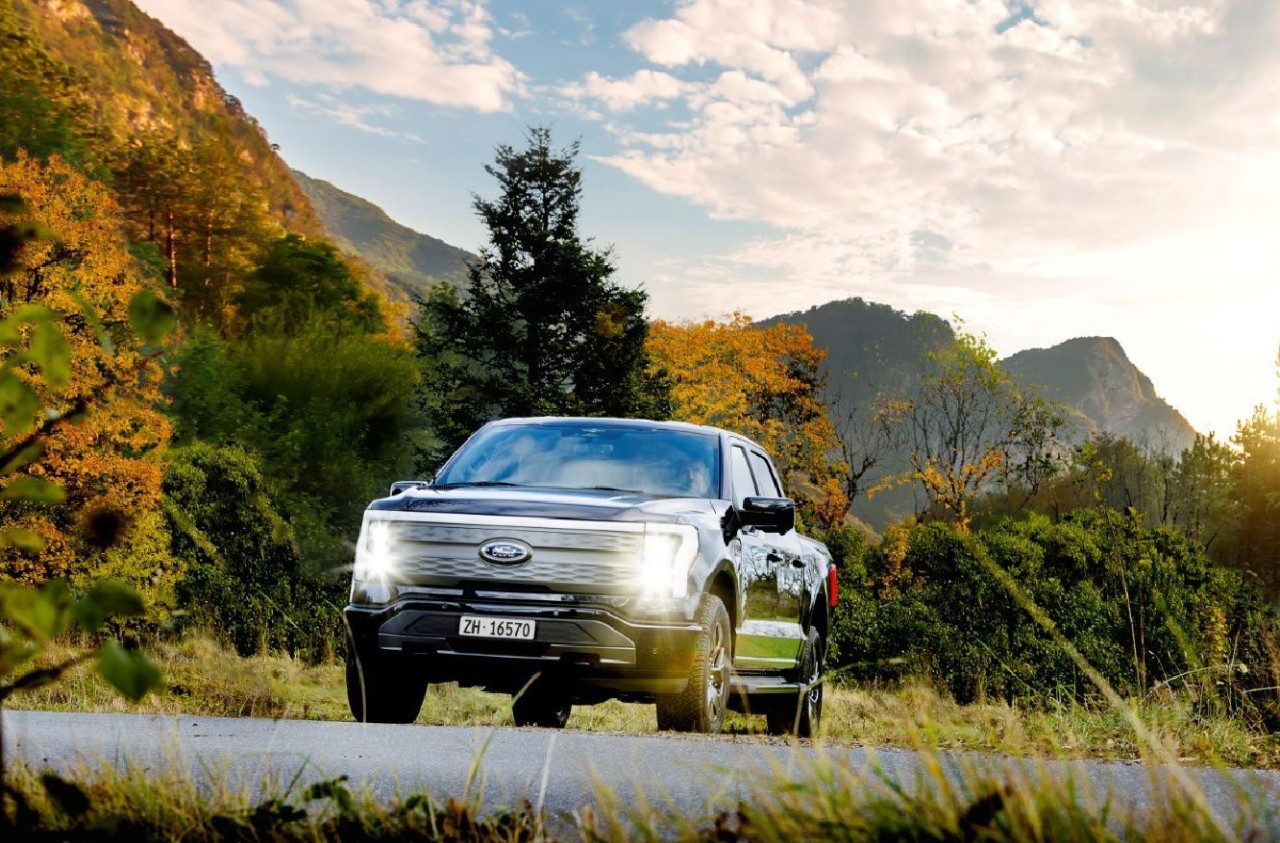
Ford is canceling the all-electric F-150 Lightning and also announced it would take a $19.5 billion charge as it aims to quickly restructure its strategy regarding electrification efforts, a massive blow for the Detroit-based company that was once one of the most gung-ho on transitioning to EVs.
The announcement comes as the writing on the wall seemed to get bolder and more identifiable. Ford was bleeding money in EVs and, although it had a lot of success with the all-electric Lightning, it is aiming to push its efforts elsewhere.
It will also restructure its entire strategy on EVs, and the Lightning is not the only vehicle getting the boot. The T3 pickup, a long-awaited vehicle that was developed in part of a skunkworks program, is also no longer in the company’s plans.
Instead of continuing on with its large EVs, it will now shift its focus to hybrids and “extended-range EVs,” which will have an onboard gasoline engine to increase traveling distance, according to the Wall Street Journal.
“Ford no longer plans to produce select larger electric vehicles where the business case has eroded due to lower-than-expected demand, high costs, and regulatory changes,” the company said in a statement.
🚨 Ford has announced it is discontinuing production of the F-150 Lightning, as it plans to report a charge of $19.5 billion in special items.
The Lightning will still be produced, but instead with a gas generator that will give it over 700 miles of range.
“Ford no longer… pic.twitter.com/ZttZ66SDHL
— TESLARATI (@Teslarati) December 15, 2025
While unfortunate, especially because the Lightning was a fantastic electric truck, Ford is ultimately a business, and a business needs to make money.
Ford has lost $13 billion on its EV business since 2023, and company executives are more than aware that they gave it plenty of time to flourish.
Andrew Frick, President of Ford, said:
“Rather than spending billions more on large EVs that now have no path to profitability, we are allocating that money into higher returning areas, more trucks and van hybrids, extended range electric vehicles, affordable EVs, and entirely new opportunities like energy storage.”
CEO Jim Farley also commented on the decision:
“Instead of plowing billions into the future knowing these large EVs will never make money, we are pivoting.”
Farley also said that the company now knows enough about the U.S. market “where we have a lot more certainty in this second inning.”
News
SpaceX shades airline for seeking contract with Amazon’s Starlink rival

SpaceX employees, including its CEO Elon Musk, shaded American Airlines on social media this past weekend due to the company’s reported talks with Amazon’s Starlink rival, Leo.
Starlink has been adopted by several airlines, including United Airlines, Qatar Airways, Hawaiian Airlines, WestJet, Air France, airBaltic, and others. It has gained notoriety as an extremely solid, dependable, and reliable option for airline travel, as traditional options frequently cause users to lose connection to the internet.
Many airlines have made the switch, while others continue to mull the options available to them. American Airlines is one of them.
A report from Bloomberg indicates the airline is thinking of going with a Starlink rival owned by Amazon, called Leo. It was previously referred to as Project Kuiper.
American CEO Robert Isom said (via Bloomberg):
“While there’s Starlink, there are other low-Earth-orbit satellite opportunities that we can look at. We’re making sure that American is going to have what our customers need.”
Isom also said American has been in touch with Amazon about installing Leo on its aircraft, but he would not reveal the status of any discussions with the company.
The report caught the attention of Michael Nicolls, the Vice President of Starlink Engineering at SpaceX, who said:
“Only fly on airlines with good connectivity… and only one source of good connectivity at the moment…”
CEO Elon Musk replied to Nicolls by stating that American Airlines risks losing “a lot of customers if their connectivity solution fails.”
American Airlines will lose a lot of customers if their connectivity solution fails
— Elon Musk (@elonmusk) December 14, 2025
There are over 8,000 Starlink satellites in orbit currently, offering internet coverage in over 150 countries and territories globally. SpaceX expands its array of satellites nearly every week with launches from California and Florida, aiming to offer internet access to everyone across the globe.
Currently, the company is focusing on expanding into new markets, such as Africa and Asia.








